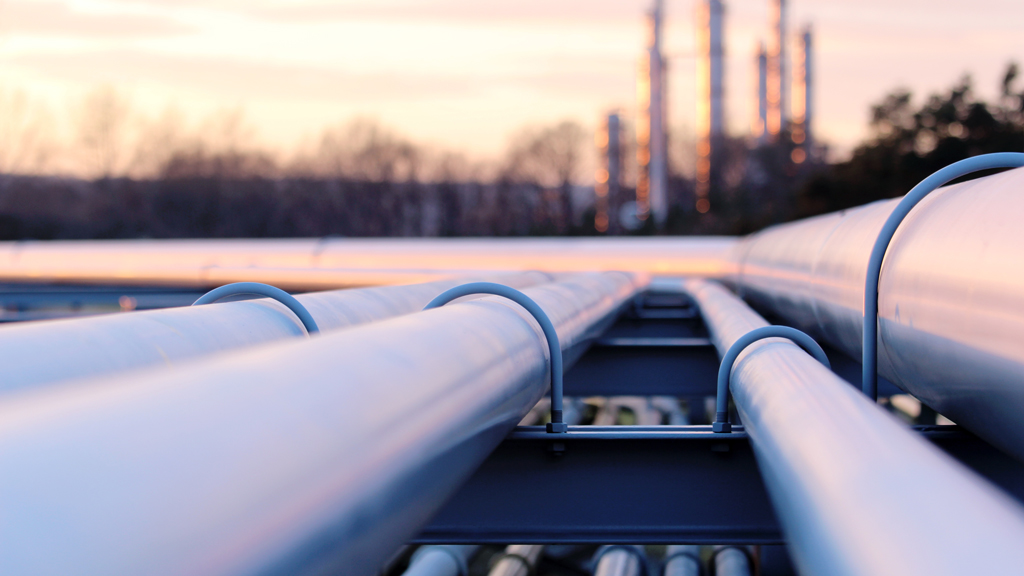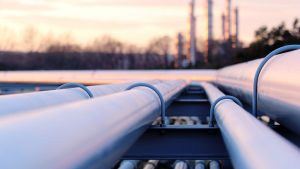CALGARY — Enbridge Inc. has begun talks with its customers about expanding its Mainline pipeline network to handle growing volumes of Canadian oil output, the Calgary-based company said recently.
“We have commenced commercial discussions with the industry. We’ve spent the quarter engineering the expansion,” said Colin Gruending, president of liquids pipelines for Enbridge, on a conference call with analysts.
While Enbridge doesn’t have a cost estimate yet for the project, Gruending added, the expansion could be in-service as early as 2026 or 2027. He emphasized it would be a small expansion that would add incremental capacity along the existing pipeline network, which has already been expanded many times over the course of its 75-year history.
“It’s really more of an optimization, not a retrenching or a new path. It’s in the (existing) right-of-way … it’s very executable,” Gruending said.
Enbridge’s Mainline system is the largest pipeline system in North America, moving crude from Western Canada to markets in Eastern Canada and the U.S. Midwest.
It was not that long ago that industry watchers believed the Mainline network would take a hit when the Trans Mountain pipeline expansion opened and began offering Canadian oil companies access to new export markets off the West Coast.
That, however, hasn’t happened. Enbridge expects its full-year average volume on the Mainline network to exceed three million barrels per day in 2024, not much different than the 3.1 million barrels per day it achieved in 2023 prior to the Trans Mountain expansion project’s start-up.
And Canadian oil production and exports continue to boom. Canadian crude oil production hit an all-time record in 2023, at 5.1 million barrels per day, as companies ramped up in anticipation of the Trans Mountain expansion’s startup. Analysts have suggested that total could increase by as much as 500,000 barrels per day on average this year.
Crude exports from Canada reached a record high of four million barrels per day in 2023, according to Statistics Canada, and continue to climb. According to figures from the U.S. Energy Information Administration released this week, Canadian crude exports to the United States hit a record 4.3 million barrels per day in July 2024, following the start-up of the Trans Mountain project.
The surge in production has been so significant that Enbridge said the Mainline system was at apportionment in July and August, and again for November. Apportionment is an industry term for what happens when demand for uncontracted space on a pipeline exceeds the available capacity in any given month.
“I don’t know if I could see apportionment every month going forward here, but seasonally, I think you’re going to see a lot of demand for the Mainline,” Gruending said.
Many analysts have suggested that Canada’s current oil boom could revive the issue of pipeline shortages sooner rather than later. Prior to the opening of the Trans Mountain expansion earlier this year, Canadian oil companies were hamstrung by a lack of pipeline export capacity, which meant the price of Canadian heavy crude often traded at a severe discount to the U.S. benchmark price.
Most industry watchers believe that the Trans Mountain expansion was likely the last major oil pipeline project this country will see, given the extreme regulatory, political and environmental challenges associated with pipeline construction.
The Trans Mountain project ran into so many hurdles that the federal government ultimately purchased it from proponent Kinder Morgan Canada just to ensure the pipeline would make it over the finish line.
But on a separate conference call, Imperial Oil CEO Brad Corson said he is not worried that the industry is going to run out of pipeline capacity anytime soon.
“We see that there are several years of running room based on existing capacity, but we also feel like there will likely be additional capacity that will be achieved both in the Enbridge system and in the (Trans Mountain) system as those operators look for further debottlenecking,” Corson said.
“We don’t have any concerns about (export capacity). Whereas a few years ago, that was a significant consideration as we thought about new…growth projects.”
Gruending said Enbridge is also looking at a number of potential expansion projects on its smaller, regional pipelines that serve Alberta’s oilsands industry.
“It’s very economically important that the (Western Canadian Sedimentary Basin) is not constrained,” he said.
Earlier this year, the Canada Energy Regulator approved Enbridge’s new tolling framework for the Mainline system. Tolls are the fees oil companies pay to ship their product on a pipeline, and Enbridge had been negotiating a new tolling framework with its oil industry customers for a year and a half.
Tolls for the newly expanded Trans Mountain pipeline have not yet been finalized, as oil companies are pushing back against the higher costs Trans Mountain Corp. wants to charge to help cover cost overruns related to the construction of the project.
Enbridge reported a third-quarter profit attributable to common shareholders of $1.29 billion, up from $532 million a year earlier.
The company said the profit amounted to 59 cents per share for the quarter ended Sept. 30, up from 26 cents per share in the same quarter last year.
The results in the most recent quarter included a non-cash, net unrealized derivative fair value gain of $112 million, compared with a net unrealized loss of $782 million a year ago when it also took a $124-million provision adjustment related to a litigation matter.
On an adjusted basis, Enbridge said it earned 55 cents per share in its latest quarter, down from an adjusted profit of 62 cents per share a year earlier.
The average analyst estimate had been for a profit of 56 cents per share, according to LSEG Data & Analytics.
©2024 The Canadian Press




Recent Comments